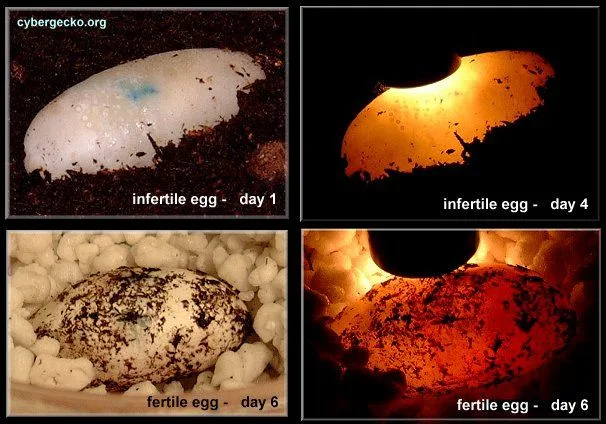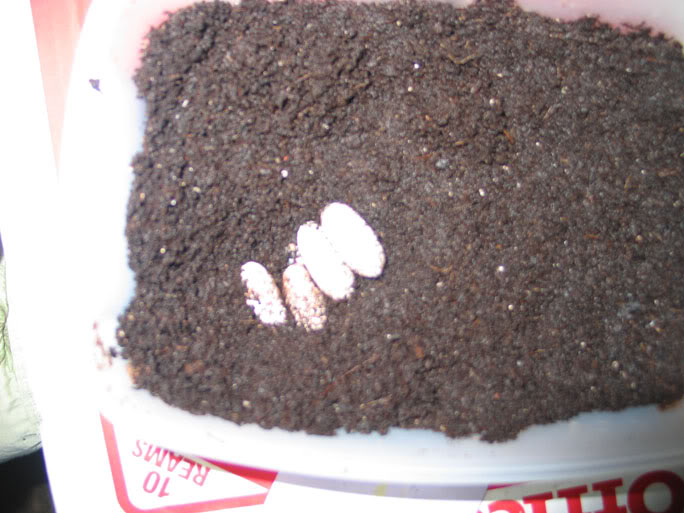Why are My Leopard Gecko Eggs Soft

There are a few reasons why your leopard gecko eggs might be soft. One possibility is that the egg was not fertilized. Another possibility is that the egg was not incubated properly and lost moisture.
Sometimes, eggs can also become damaged during incubation if they are not turned regularly or if the temperature is too high or low. If you find that your leopard gecko eggs are soft, it is best to consult a reptile veterinarian for help in determining the cause and how to best care for your leopard geckos.
If you’ve found that your leopard gecko eggs are soft, there could be a few reasons why. One possibility is that the eggs were incubated at too high of a temperature, causing them to become dehydrated and collapse. Another possibility is that the eggs were not properly fertilized.
If the female leopard gecko was not mated with a male, or if the male was not healthy, the eggs may not have been fertilized correctly.If your leopard gecko eggs are soft, it’s important to figure out why so that you can take steps to avoid it in the future. If the problem is dehydration, make sure to keep an eye on the humidity levels in the incubator.
If you think the problem might be with fertility, be sure to consult with a reptile veterinarian to get help troubleshooting.

Credit: geckotime.com
Should Leopard Gecko Eggs Be Soft?
Leopard gecko eggs should not be soft. If they are, it could be a sign of infection or disease and the eggs will not hatch.
What Do Infertile Leopard Gecko Eggs Look Like?
If you’re keeping leopard geckos and are hoping to breed them, it’s important to know what healthy, fertile eggs look like. This way, you can be sure that your female is producing eggs that have a good chance of hatching. Keep reading to learn more about what infertile leopard gecko eggs look like and how to tell if your eggs are likely to hatch.
Healthy leopard gecko eggs are typically oval in shape and range in color from white to pale yellow. They should be smooth and relatively firm to the touch. You may also see small spots of red on the egg, which is normal and does not indicate fertility problems.
Infertile leopard gecko eggs, on the other hand, tend to be misshapen and soft. The shell may also be thin, brittle, or discolored. If you suspect that an egg is infertile, it’s best to remove it from the incubator so that it doesn’t contaminate the other eggs.
If you’re not sure whether an egg is fertile or not, there are a few ways to test its viability. One method is called candling, which involves holding the egg up to a bright light source (like a flashlight) in order to see inside. Fertile eggs will appear opaque with a dark spot in the center; infertile ones will be transparent or have only a small amount of liquid inside.
Another way to test for fertility is by gently tapping on the egg; fertile ones will make a solid sound while infertiles will make a hollow noise.Ultimately, whether or not your leopard gecko’s Eggs are fertile comes down to luck – even if everything else looks perfect, there’s always a chance that something could go wrong during development and an Egg won’t hatch successfully.
What Do Healthy Leopard Gecko Eggs Look Like?
Leopard gecko eggs are small, white and leathery. They are about the size of a grape and have a smooth, glossy surface. Healthy leopard gecko eggs should be firm to the touch and have a small, round yolk inside.
The yolk should be a bright yellow color and surrounded by clear albumen. If the egg is cracked or has any abnormalities, it is likely not viable and will not hatch.
How Long Does It Take for a Leopard Gecko Egg to Harden?
It takes approximately 28-30 days for a leopard gecko egg to harden. The length of time may vary slightly depending on the temperature and humidity levels in the incubator.
Here is how I incubate my Leopard Gecko Eggs.
How to Tell If Leopard Gecko Eggs are Fertile
If you’re wondering whether your leopard gecko eggs are fertile, there are a few things you can look for. The first is the appearance of the eggs. Fertile eggs will be smooth and spherical, while infertile eggs will be misshapen and often have a chalky appearance.
Another way to tell if leopard gecko eggs are fertile is to candling them. This involves using a bright light to look inside the egg. You should be able to see veins running through a fertile egg, but an infertile egg will be mostly opaque.
Finally, you can try gently tapping on the egg. A healthy, fertilized egg will feel solid, while an infertile egg will sound hollow when tapped.If you’re still not sure whether your leopard gecko’s eggs are fertile, your best bet is to consult with a reptile vet or experienced breeder.
They’ll be able to help you determine whether the eggs are viable and advise you on the best course of action for incubating them.
How to Take Care of Leopard Gecko Eggs Without an Incubator
Leopard geckos are easy to care for and make great pets. They are low maintenance, don’t require a lot of space, and are relatively long-lived. One important thing to keep in mind if you’re thinking about getting a leopard gecko is that they lay eggs.
If you’re not planning on breeding your leopard gecko, you’ll need to take special care of the eggs until they hatch. Here’s how to do it:First, you’ll need to find a suitable container for the eggs.
A plastic shoe box or tupperware container with holes punched in the top for ventilation will work fine. Once you have your container, line it with paper towels or Reptile Carpet so the eggs won’t roll around and get damaged.Next, you’ll need to gently remove the eggs from your leopard gecko’s enclosure and place them in the prepared container.
Be careful not to damage the eggs as they are quite delicate. Once all of the eggs are in the container, cover it with a lid or piece of cardboard and set it aside in a warm spot out of direct sunlight.The final step is to wait!
Leopard gecko eggs typically take 60-90 days to hatch. During this time, check on them periodically to make sure that they haven’t dried out or been damaged in any way. When they’re ready to hatch, you’ll see tiny cracks forming on the eggshells – at this point, it’s best to leave them be and let nature take its course.
How Long Does It Take for Leopard Gecko Eggs to Hatch
One of the most frequently asked questions leopard gecko breeders get is “How long does it take for leopard gecko eggs to hatch?” The answer to this question can vary slightly based on a number of factors, but in general, you can expect your leopard gecko eggs to hatch within 45-60 days.Temperature plays a big role in how long it takes for leopard gecko eggs to hatch.
If the temperature is too low, the eggs will not develop properly and may never hatch. Conversely, if the temperature is too high, the embryos inside the eggs will develop too quickly and could die. For this reason, it’s important to maintain a consistent temperature around 82-88 degrees Fahrenheit during incubation.
The type of substrate you use to incubate your leopard gecko eggs can also affect how long they take to hatch. Some substrates retain moisture better than others, which can impact the development of the embryos inside the egg. In general, breeders recommend using a vermiculite or perlite/vermiculite mix as your substrate for incubating leopard gecko eggs.
Finally, the size of the egg can also play a role in how long it takes to hatch. Smaller eggs tend to incubate faster than larger ones because there is less mass that needs to be heated evenly throughout. However, this difference is usually only a few days at most.
Can You Leave Leopard Gecko Eggs With Mother
Leopard geckos are oviparous, meaning they lay eggs. After the female leopard gecko lays her eggs, she will incubate them for about two months before they hatch. The mother leopard gecko will then take care of her young until they are old enough to fend for themselves.
So, can you leave leopard gecko eggs with the mother? Yes, you can! In fact, it is best to leave the eggs with the mother as she knows how to best take care of them and ensure that they hatch successfully.
Conclusion
If you’re a Leopard Gecko owner, you may be wondering why your Leopard Gecko eggs are soft. There are many reasons why this could be happening, so it’s important to do some research to figure out the cause. The most common reason for soft eggs is improper incubation temperature.
If the temperature is too high or low, it can cause the eggshells to become thin and weak. This can lead to them being crushed during incubation, which will kill the embryo inside. Another possible reason for soft eggs is dehydration.
If your Leopard Gecko isn’t getting enough water, their body will start to steal moisture from their eggs in order to stay hydrated. This can cause the shells to become thinner and more fragile. If you think either of these might be the problem, it’s important to seek professional help so that your Leopard Gecko can get the care they need.